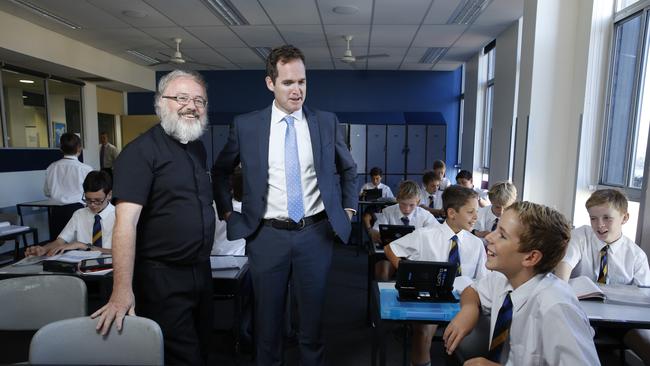Coronavirus: There are better ways to educate our young

The state governments and premiers want children to return, but they differ markedly on when this should occur. Our two largest states evidently have differing health advice with NSW public schools beginning a staged return for students from 11 May, whilst Victoria continues to encourage children to remain learning from home for the duration of the second school term of the year.
Teachers want children back at school. The teachers I know are missing their students immensely, the relational nature of our vocation is the reason we chose the profession in the first place.
Parents definitely want their children back at school and the children themselves miss their friends and their teachers — especially Year 12’s, the Class of 2020, who have had to sacrifice so many of the rites of passage that they were legitimately looking forward to this year.
The experience for schools, teachers and principals over the last few months has been characterised by an explosion of goodwill and acute confusion as to what rules and protocols applied to their experience in comparison to others.
Our governments moved quickly to limit travel, close borders and enforce social distancing for all and sundry, whilst encouraging parents to keep their children attending school. While other sectors of our economy moved quickly to send their workers home, many schools were not permitted to do so until attendance rates of students dropped to single figures and made online learning inevitable.
Our leaders and health experts kept advising us that there was no evidence of children posing a risk of infection to their teachers or other adults who serve schools around the country. Our concern was that they were (to quote Nassim Nicholas Taleb) confusing absence of evidence with evidence of absence.
We have had evidently wonderful success in flattening the curve and our rate of infection across Australia is now falling precipitously. There are signals from our governments that the social and economic restrictions that have so manifestly changed our lives this year will start to be eased in the coming weeks. What about schools?
The planned return to face-to-face teaching is as challenging an exercise for schools as the rapid development of online learning programs. There are two, competing priorities. Firstly the safety of our local communities — of students, teachers and parents. How do we bring students back to face-to-face teaching whilst protecting our community from the threat of contagion? We’re now advised that the social distancing protocols that are still in effect for other parts of our society are not relevant for schools. This is a relief for schools like my own that are on sites the size of a postage stamp. The concept of keeping young children (and especially adolescent boys) apart from each other is naïve at best. It just won’t occur and the contradictions in advice cause angst for all schools. The most effective risk control will be keeping vulnerable teachers and support staff at home. Additionally, some parents will remain concerned about their child’s health, will keep them at home, but will expect for the online program to be maintained.
The second priority is the continuum and depth of learning that is so vital for children. A staged return to school may mitigate some risk to students and teachers, but it is likely to be a disruptive experience with alternating days at home and at school. Additionally, the Commonwealth has provided a condition in the Education Act that make it a requirement for schools to care for any student who requires that supervision — something we would do anyway. Increasingly, regardless of the attendance roster of their local school, parents will be sending their children to school if the health risks continue to fall and the old demands of their own work are renewed.
What we all desperately want to avoid is the possibility that an infection or outbreak causing an individual school or the entire sector to return to online learning. This would be enormously disruptive to students, their parents and our dedicated teachers.
Once we have arrived at our ‘new normal’ in the coming months in Australia’s schools, reflecting on and learning from what we have experienced is essential.
Ironically, COVID-19 has taught us much about the manner in which we educate children. That local school-based decision-making tends to be best suited to responding to a crisis and that governments should trust schools to make decisions in the best interests of their communities; that schools and teachers can be particularly resourceful and innovative when we need to be; and that while we have inherited a schooling model from the industrial age, there are better ways of educating our young. Let’s not waste this crisis.
Mark Tannock is the Principal of St Aloysius’ College, Sydney



Everyone wants children back at school as soon as it is safe to have them there. The Prime Minister has wanted this from the beginning of the pandemic, as he has consistently appealed to our nation that schools are safe places for children and their teachers. He recently appealed directly to Australian teachers, imploring them to return to school.